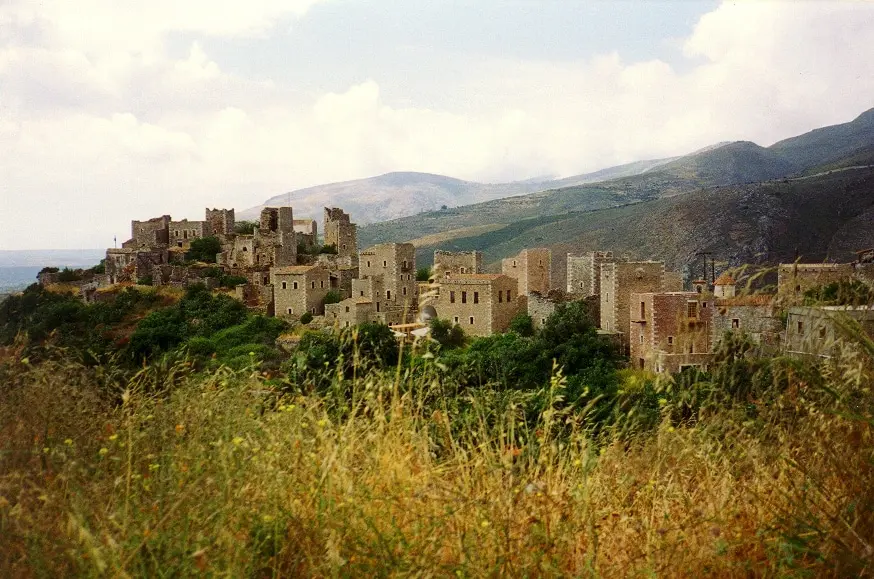
Located at the southernmost tip of continental Europe, the Mani peninsula in the Peloponnese has a unique, stark landscape, but its rich history and traditions make it a stunning destination for those who want to explore the real Greece.
Mani is an arid region, and it has a rough edge to it unlike many other regions in Greece. Its stone houses often look more like small forts while its Byzantine churches, tiny coves and awe-inspiring caves complete a picture worthy not only of travel books but history books as well.
Mani is a “closed” society, which has been ruled for centuries along the lines of blood and gender. Perched on the steep slopes of the southern Taygetos mountains and constantly on the alert for invasions over the centuries, the people of Mani developed a very strong sense of autonomy.
Even now, what visitors see in Mani is only what they are allowed to see. In this corner of the Peloponnese at the southernmost tip of continental Europe, everything there has a unique starkness, yet a magical quality at the same time.
Recorded live, watch a tour of one of the most historical and beautiful towns in Greece, Areopoli, as we are visiting the area of Mani to discover the rich history, gastronomy and wonderful proud people known as Maniates. Also visit Limeni and Oitilo and all the other traditional villages of the Mani Peninsula. #Uknown #Spectacular #Greece
Posted by Greek Reporter on Friday, July 6, 2018
Places to see in Mani
The iconic architecture of the Mani area is the tower-like stone house which resembles a fort, or perhaps a watchtower. With many of them located close to each other, rising menacingly up to the sky, they symbolize the strength and superiority of their owners.
With no windows other than small holes, they are built for battle, and this is simply because in older times, the people of Mani truly were mostly warriors. After all, they are the descendants of the ancient Spartans.
Of course, there are many castles from Byzantine times in Mani as well. Troupaki-Mourtzinou, Tsitsiris, Passava, Kelefa, Vathia, Tigani, and Acilleion are just some of the famous castles of Mani. Austere stone fortifications, they were built not for the charm we see in them today but to defend the land.
Byzantium is everywhere in Mani. In addition to the castles, there are many Byzantine churches and monasteries across the region; however, they are for the most part small and humble. They serve as timeless monuments of beauty and faith.
Made of ash and pink stone, many have elegantly tiled domes, marble-embossed icon frames, and intricate sculptural decoration. Most of them are of great architectural and artistic interest.
The cluster of Mani tower houses in the village of Vathia is one of the most photographed in the entire area. The village is distinguished for its beauty and is a living monument to the architectural traditions of Mani.

Kardamyli is one of the most beautiful seaside villages in the entire Peloponnesian peninsula. It is also a place of great historical interest with many tower houses and countless Byzantine churches and monasteries scattered on its verdant slopes. Kardamili is home to a great archaeological museum as well.
The Diros Caves are a natural wonder of Mani which everyone simply must visit. An underground river flows through a massive stone formation and creates an ambience all its own, creating unique colors and shapes in the stone that must be seen to be believed.
Speleologists believe that the caves of Diros are among the most important in the world. The easiest to visit is that of Vlychada with a length of 2.5 kilometers (1.5 miles). The cave of Alepotrypa once served as the home of a group of people in the Neolithic Age.
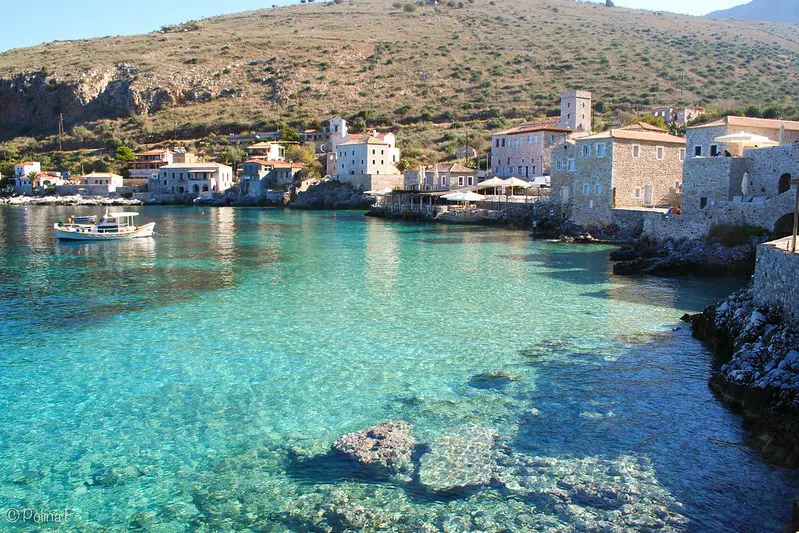
Continuing down from Areopolis to the sea, visitors will see before them the indescribably beautiful village of Limeni, the most photographed seaside village in Mani, in which there are a handful of wonderful tower houses, crystal-clear aquamarine waters, and excellent fish tavernas.
Cape Tainaron is the southernmost point of mainland Greece and the second southernmost point in all of mainland Europe. It separates the Messenian Gulf in the west from the Laconian Gulf in the east and is famous for its ancient history and its lighthouse.
In Kotronas, one can admire a series of picturesque coves along the craggy coastline. In old times, the area was called Tefthroni and was one of the most important ports in the region in ancient Greece.
Culture and history
A skull of a Homo sapien individual dating back more than 210,000 years ago was found in the Alepotrypa Cave on the western side of the peninsula. As of 2019, this was the oldest evidence of Homo sapiens anywhere in Europe.
Neolithic remains have also been found in many caves along the Mani coastline, including Alepotrypa Cave. The poet Homer refers to a number of towns in the Mani region, and some artifacts from the Mycenaean period have been found there as well.
The area was occupied by the Dorians in about 1200 BC, who later were ruled by the Spartans. After Sparta lost its power and was destroyed in the third century BC, Mani remained self-governed.
The region became part of the Byzantine Empire, and, after its decline, the peninsula was fought over by the Byzantines, the Franks, and the Saracens.
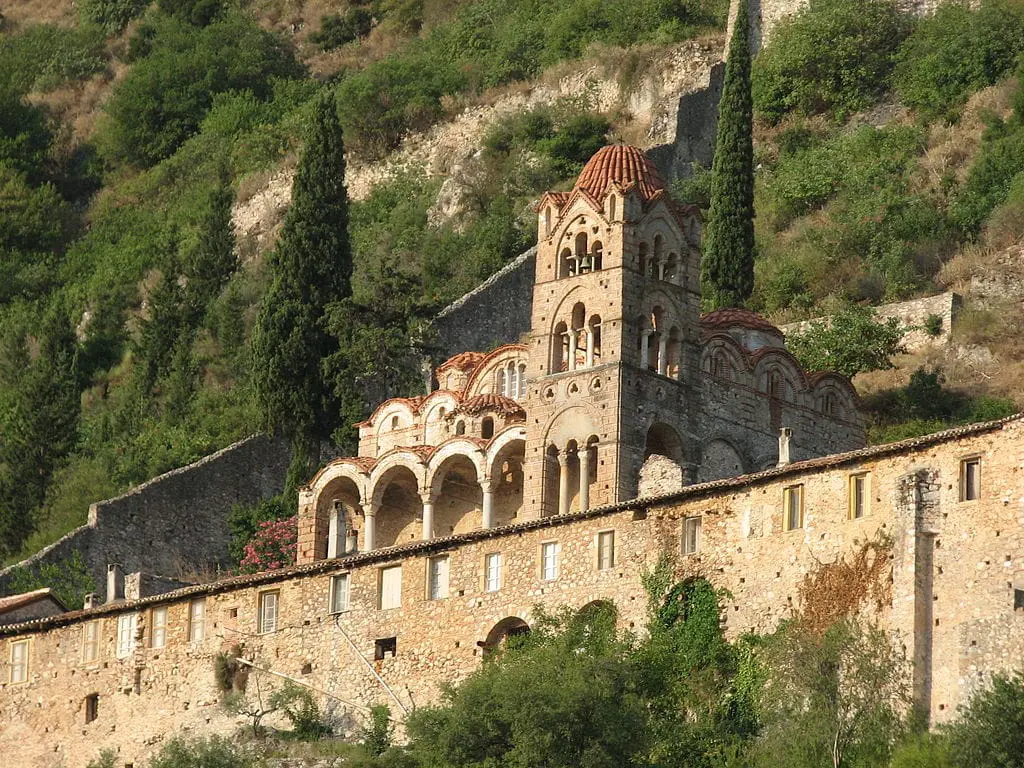
After the Fourth Crusade in 1204 AD, Italian and French knights (referred to collectively by the Greeks as Franks) occupied the Peloponnese and created the Principality of Achaea.
They built the fortresses of Mystras, Passavas, Gustema (Beaufort), and Great Maina. The area came under Byzantine rule again in 1262, forming part of the Despotate of the Morea.
In 1460, after the fall of Constantinople, the Despotate came under Ottoman rule.
Mani was not subdued militarily, however, and retained its self-government in exchange for an annual tribute although this was only paid once. Local chieftains, or “beys,” governed Mani on behalf of the Ottomans.
The first, and surely the most colorful, local governor was Limberakis Gerakaris in the 17th century. A former oarsman in the Venetian fleet turned pirate, he was captured by the Ottomans and condemned to death.
The Grand Vizier pardoned him on condition that he took over control of Mani as an Ottoman agent.
Mani during Greece’s War of Independence
Following the failure of the Orlov Revolt, in 1776 Mani’s autonomous status was recognized by the Porte, and for the next forty-five years until the outbreak of the Greek War of Independence in 1821, beys again reigned over the peninsula on behalf of the Ottomans.

As Ottoman power declined, the mountains of the Mani became a stronghold of the Greek rebels. Petros (“Petrobey”) Mavromichalis, the last bey of Mani, was among the leaders of the Greek War of Independence.
He proclaimed the revolution at Areopoli on March 17, 1821. The Maniots contributed greatly to the struggle, but once Greek independence was won, they wanted to retain local autonomy in their home region.
During the rule of Ioannis Kapodistrias, the first president of free Greece, they violently resisted outside interference, culminating in Mavromichalis’ assassination of Kapodistrias.
In 1878, the national government reduced the local autonomy of the Mani, and the area gradually became a regional backwater.
Many Maniots abandoned their ancestral land, moving to major Greek cities, or emigrating to Europe and the United States.
In the 1970s, however, new roads were constructed and the area started receiving numbers of Greek and foreign tourists due to its history and natural beauty. Today, its population has grown, and the area has become prosperous once again.
Gastronomy
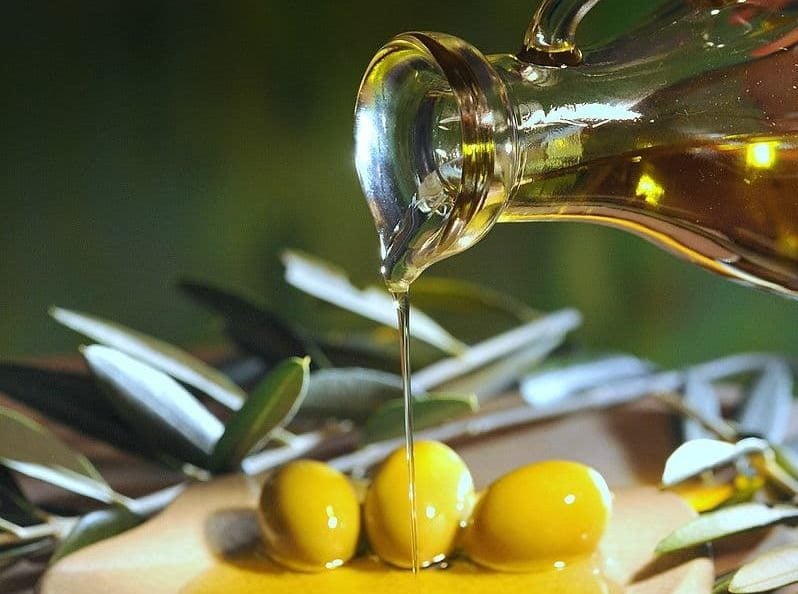
Maniot cuisine is famous in Greece and products from Mani are quite distinguished for their quality, with many local dishes and delicacies popular across Greece. Famous for its great olive oil due to the stony terrain, Maniot cuisine is simple, healthy, and delicious.
The cuisine of Mani includes “Pitarakia,” which are deep-fried pies made with phyllo and stuffed with greens, vegetables, meats, and herbs.
“Diples” are special sweets served on holidays, religious feasts, weddings, and births. These are all celebrations which symbolize joy and abundance. Made with a flaky flour and egg dough, they are filled with honey, cinnamon, and coarsely chopped walnuts.
“Lalangia” or “tiganides” are fried doughs made traditionally twice a year (Christmas and Epiphany); however, today you can find them almost everywhere. They are doughnut-like treats that can be either savory or sweet. They can be sprinkled with grated feta or dry mizithra, or covered with jam or honey, as you wish.
“Galatopita” or milk pie is a sweet pie that used to be made in Mani for Easter. It is comprised of a handmade sheet of pastry flavored with plenty of cinnamon.
“Tyropita,” or cheese pie, is not baked, just topped with fresh cheese and dill. It has only one layer of phyllo at the bottom, and the top remains open. It was made mainly for Easter, which is still a common practice today.
Kokoras Bardouniotikos, or “cooked rooster” is a traditional dish that comes from the area of Bardounia. Its characteristic ingredient is sphela cheese, a local fresh cheese, added just before the end of the cooking time. The dish is served on holidays and Sundays.
“Leio me hondro” is an entree featuring goat meat in tomato sauce cooked together with cracked wheat. It also can be made with lamb or goat liver.
“Pork with celery fricassee” is a traditional food that Maniots continue to make today, using cuts from the pig’s shoulder.
Quail is a popular meze, or hors d’oevre, with the quail kept for up to two years in clay after they had been frozen. The dish is served braised with rice or trahana. It derives from “kouzouni,” which is quail, tomato, and onion atop handmade phyllo.
“Syglino” is the best-known delicacy from Mani. Each house raised its own pigs, which would provide the families with meat for the whole year. They would slaughter them at Christmas, and they used all parts of the animal.
The meat would be hung and smoked over sage or cedar for hours. It would then be carved into pieces. The fat would also be smoked and then placed with the smoked pork, which would be kept in clay pots together.
“Omaties or maties” are tasty sausages filled with chopped pork liver, rice, fried greens, garlic, and onion.
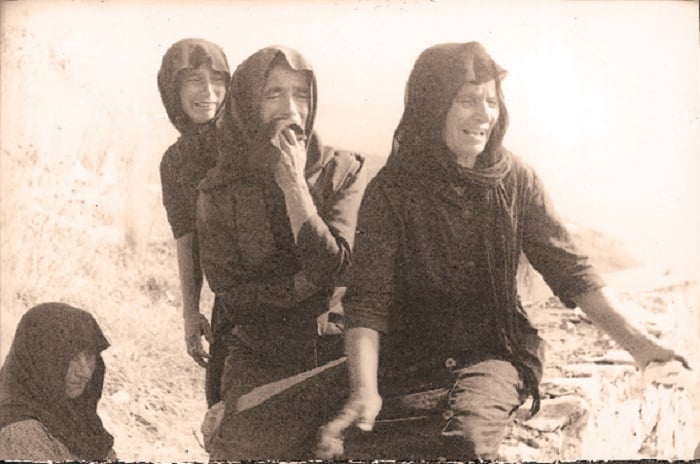
Vendettas in Mani, Greece
Along with Crete, Mani is one of the regions of Greece where the keeping of vendettas is a revered part of local tradition.
The word vendetta derives from the Latin verb “vendigo,” which means “to take revenge.” The word’s origins are rooted back in the Homeric era, but, in Mani, the notion can be found throughout its history.
A vendetta usually takes the form of a murder committed by a member of one family against a member of another family in retaliation for the murder or dishonor of a family member of the avenging family.
In Mani, families are extraordinarily tight-knit, and, if another family wrongs the family, only blood can wash away the shame, according to this old tradition. For instance, if a young man has sexual affairs with a young woman from another family without their consent, the woman’s family is humiliated. This is a cause for vendetta.
Furthermore, if a family steals a piece of land that belongs to another family, this is also a cause for retaliation.
In Mani, the vendetta is not considered to be a barbaric act. On the contrary, the person who seeks revenge to restore the honor of a family is one who earns a high degree of respect in the community.
The punishment is decided upon by a family council while the perpetrator may not be punished personally. The vendetta could be directed against another member of the opposing family.
In earlier times, however, the goal of a Maniot family that was dishonored was the complete annihilation of the opposing family.
The first blow was never unannounced. The provocative side officially declared war, the bells rang, and the two opposing parties went to their towers. At that point, the gloves were off and any means of destruction was permitted.
The neutral population of the village during the period of the vendetta either went into hiding or simply moved away until the end of the internecine war.
In some cases, the vendetta code allowed for a temporary break for necessary work, such as plowing, sowing, reaping, threshing and picking olives.
The warring parties would then work neighboring fields by day, and at night they would supplying their towers with food and ammunition.
The fight resumed again just as soon as the harvest was over.
A limited truce could also be made when a member of the opposing family had a baptism, a wedding, or some similar celebration. Of course, the most common way the vendetta ended was to annihilate a part of one family, so the survivors were forced to leave for other villages, abandoning their houses and fields to the winner.
The ancient tradition of vendetta in the Mani region thankfully has now petered out, with only scattered outbreaks of hostilities occurring by the time of the Second World War.
Today, of course, these are all just memories of a past time, and the Mani area is open to all who would like to explore this beautiful region and all its many unique charms.
See all the latest news from Greece and the world at Greekreporter.com. Contact our newsroom to report an update or send your story, photos and videos. Follow GR on Google News and subscribe here to our daily email!



